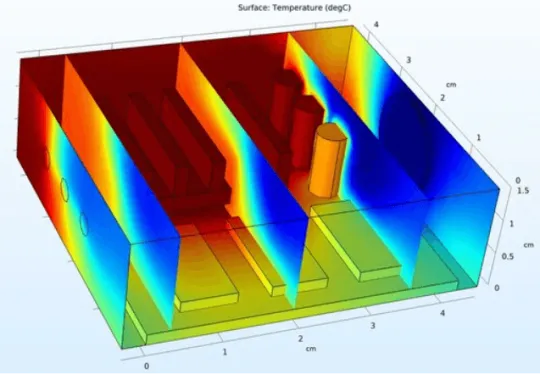Illuminating Solar Dynamics with Computational Fluid Dynamics (CFD)
By:
Sushant Singh
On
10/11/2024Reading time:
1 min
Summary:
At Prisma Engineering Services LLC, we're passionate about pushing the boundaries of engineering design, especially in the realm of solar panel technology. Join us as we delve into the captivating world of Computational Fluid Dynamics (CFD) and its pivotal role in optimizing solar panel performance. Whether you're an industry professional seeking cutting-edge techniques or an enthusiast curious about the science behind solar energy, our blog serves as your go-to resource. Stay tuned for expert analyses, practical tips, and thought-provoking discussions as we illuminate the path toward a brighter, more sustainable future with CFD-driven solar dynamics at Prisma Engineering Services LLC

Desing and Energy Analysis
Enhancing Building Design and Energy Efficiency

Thermal Analysis
Predicting and Improving HVAC System Performance

SOLAR
Optimizing Efficiency and Performance in Solar Panel Manufacturing through Continuous Flow Analysis (CFA)
Enhancing Solar Panel Efficiency and Performance through Advanced Airflow Management Efficient airflow management is crucial for maximizing the performance and longevity of solar panels. Computational Fluid Dynamics (CFD) plays a pivotal role in predicting airflow patterns and temperature distribution within solar panel systems. By leveraging CFD insights, engineers can refine the design and placement of ventilation systems, thus optimizing cooling efficiency. This not only minimizes heat-related issues but also enhances the overall lifespan and productivity of solar panels.
Unlocking the full potential of solar energy through optimized airflow management – harnessing the power of nature efficiently.
Solar Project in California
Simulating Environmental Conditions for Wind Farm Design
Simulating Environmental Conditions for Wind Farm Design CFD simulations are also used in the design of wind farms, where the accurate prediction of wind flow patterns and turbine performance is crucial. By simulating the complex interactions between the turbines and the surrounding environment, CFD can assist in optimizing the placement and design of wind turbines. This helps in maximizing energy production while minimizing structural stresses and maintenance costs.
In conclusion, CFD has become an indispensable tool in engineering design, enabling engineers to predict and optimize fluid flow and heat transfer in various systems with high accuracy. Its applications in building design, HVAC systems, electronic cooling, and wind farm design have resulted in significant energy and cost savings while improving overall system performance. As technology continues to advance, the potential of CFD in engineering design will only continue to grow, making it an essential asset for engineers in various industries.
